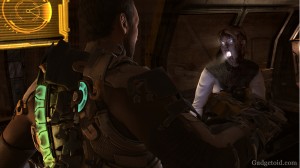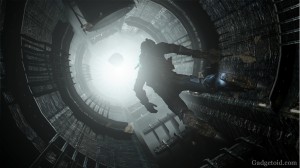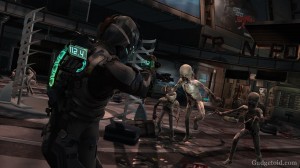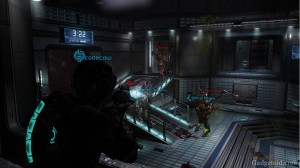Dead Space 2 review [Xbox 360]
 Review by John Cranston
Review by John Cranston
Three years have passed since the terrifying events aboard USG Ishimura and the colony Aegis 7, and despite his apparent success in singularly saving humanity from the necromorph outbreak, Isaac Clarke is now imprisoned in a mental institution.
When another outbreak occurs, Isaac finds himself once more facing nightmarish odds of survival against monsters, religious extremists, conspiratorial government agents and the machinations of his frail, demented mind. Dead Space 2 is available now for Xbox 360, PS3 and PC, dare you face the terror again?
Back in 2008, when EA released Dead Space it was both a commercial and critical success, bringing a new and terrifying survival horror experience to gamers. Although thematically developers Visceral Games had borrowed heavily from science-fiction horror films such as Event Horizon, Alien and The Thing, they were able to weave a claustrophobic and nerve-wracking story with some interesting and innovative game mechanics.
Returning to the same world brings with it the risk of being less genuinely frightening – how many ways can there really be to make us jump out of our seats and scream like little girls? In this case Visceral seem to have thought through the risks and have come up with a more intense and action-packed sequel that can best be described with a metaphor – Dead Space was a log flume, Dead Space 2 is a white knuckle roller-coaster.
Beginning with a recap of the closing events of Dead Space, we are reminded that the sole beacon of hope that guided our protagonist through the horrors was in fact a telepathic delusion caused by the machinations of The Red Marker, a large alien structure of unknown origin or purpose which Isaac thought destroyed.
The death of Nicole is haunting Isaac in more ways than one
Years later on “the Sprawl”, a space station built from the remains of Saturns moon Titan, Isaac is woken from a comatose state and is instantly witness to the transformation of his liberator into a grotesque alien monstrosity – the necromorphs are back. Staggering frantically through an overrun medical facility you are slowly introduced to the weapons, tools, rigs (combat clothing) and abilities you must utilise to help engineer Isaac survive.
Kinesis and stasis – the ability to pick things and slow things down – play a much more integral role in Dead Space 2. Rather than just being essential puzzle-solving tools you will often rely on them to help you defeat the masses of enemies. Being able to grab nearby objects and throw them at the necromorphs can prove both hilarious and useful – impaling them upon poles or throwing exploding canisters toward them helps preserve what precious ammunition you have in your limited inventory.
Puzzle solving elements have been given a few tweaks, the most notable being the enhancement of the zero-gravity sections, which now allow Isaac to fly around in full 360 degree space thanks to the added thrusters on his rig. At times it can be disorientating, but on the whole is more satisfying than the aim-jump-land technique used previously. The increased control also makes combat in a vacuum more exciting, with the lack of perceptible audio cues helping heighten the tension.
Zero gravity sections are less of a headache this time around
Also given more depth this time around is Isaac himself. No longer bound to remain the strong silent type, he meets and interacts with many people over the course of the story, some out to help him and some determined to destroy what shreds of sanity he has left. Getting a look at the man behind the mask definitely helps you connect with his plight, but it also means you pour less of yourself into the character.
As you traverse the varied environs of The Sprawl, you’ll have a few quiet moments to appreciate what a fantastic job the concept and environment artists have done, and what a stark contrast the space station presents from the confines of the Ishimura. Although the game feels more linear as you’re not retreading your steps too often, it’s no detriment to the intensity of the action.
With a larger and more diverse population, post-outbreak The Sprawl plays host to a larger variety of necromorph. Notable inclusions are the Pukers, shambling corpses spewing acidic bile which both damages and debilitates Isaac, the Stalkers, fast bipedal creatures which use cunning to flank Isaac before launching into a headfirst charge, and The Pack, large groups of necromorphed children shrieking hauntingly as they use their numbers to overwhelm you.
Though weak individually, The Pack carry strength in numbers
With all these extra enemies to fight, you need to utilise the more expansive arsenal available to Isaac. But finding the relevent blueprints from which to construct the weapons and the credits to do so may prove too much for one play through. Fortunately, the overall length of the campaign is such that partaking in repeat play throughs in order to experience everything is not too time prohibitive. And there are plenty of further, secret, incentives to tempt you into returning.
In addition to the intense, cinematic, single-player experience, Visceral have also included an online team-based multiplayer mode, which sees two opposing teams fighting over objectives in levels based on the campaign environs. One team will play as humans, suited in combat rigs and wielding weaponry akin to those Isaac finds in the campaign, the other team plays as the necromorphs, with four different monster types to choose from.
Killing enemies and completing objectives awards you experience points, and each consecutive experience level unlocks new weapons and suits for the humans, and also awards upgrades to the abilities of the necromorph. As humans, working together as a team is vital, as straggling team members are easily overwhelmed. Selecting the right monster and spawning point is the key to success as a necromorph.
With limited time and ammunition, tactics are important in the multiplayer mode
When a multiplayer mode is added to a title, unless it is extremely accessible, compellingly rewarding and devoid of abusable glitches, it will often be dismissed as a five minute wonder, with only the most ardent fans playing it mere months past its release date. For every “Left4Dead” there’s a “Singularity” and although sad, I believe that Dead Space 2’s multiplayer will fall into the latter category, simply because at present it does not offer enough diversity to keep players interested.
Of course if Visceral are keen to support and nurture this new addition, by releasing new game modes and maps, fixing bugs and most importantly, ensuring stable servers for players to connect to, then it’s very possible it could grow in importance.
Multiplayer longevity concerns aside, the crucial point to be aware of is that the single player mode in Dead Space 2 is a beginning to end tour-de-force worth the cover price alone. Visceral have managed to capture the intensity and terror of the first game, while improving areas which caused confusion and frustration. The conclusion of Isaacs struggle is satisfying, but will raise just as many questions as it answers and certainly allow for a further installment in this exciting game of tactical dismemberment.




